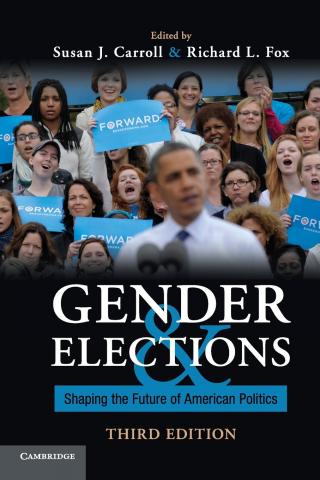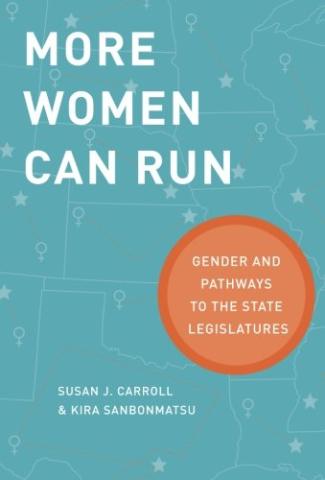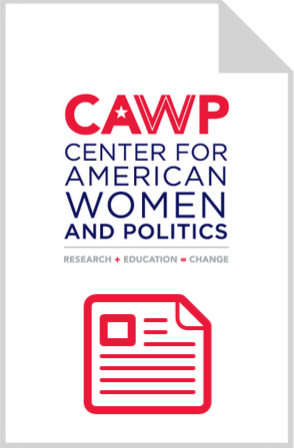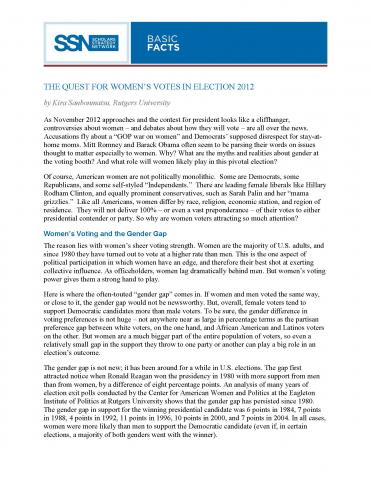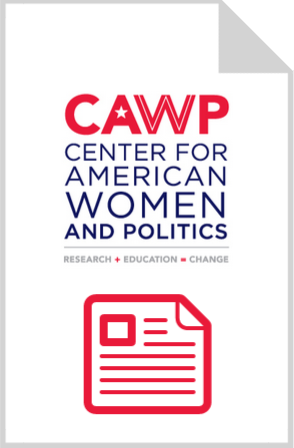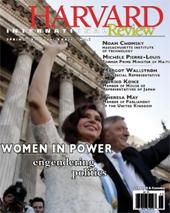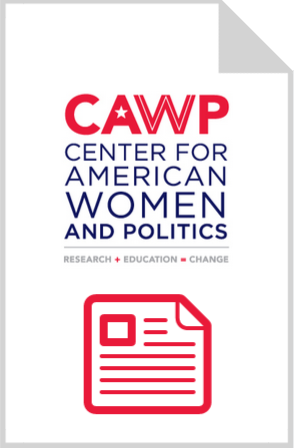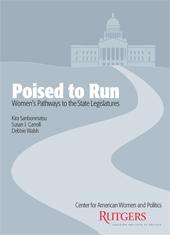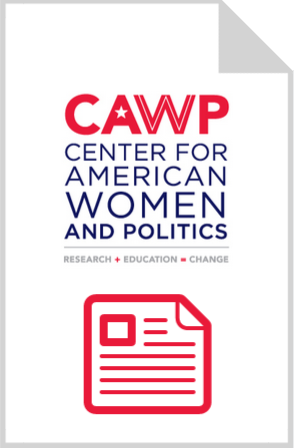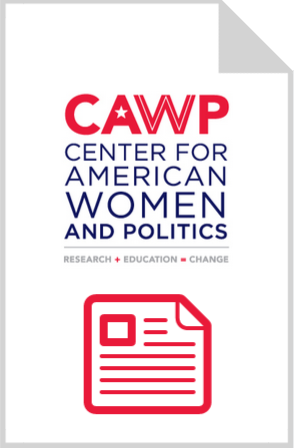Women’s Election to Office in the Fifty States: Opportunities and Challenges
by Kira Sanbonmatsu
Book chapter in Gender and Elections: Shaping the Future of American Politics,
Eds. Susan J. Carroll, CAWP, Rutgers University and Richard L. Fox, Union College, New York
Cambridge University Press, 2013 Third Edition, pp. 265-287.Book ChapterResearchCAWP ScholarPolitical PartiesCandidates and CampaignsCandidate RecruitmentState LegislatureStatewide ExecutiveMore Women Can Run: Gender and Pathways to the State Legislatures
by Susan Carroll and Kira Sanbonmatsu
Oxford University Press, September 2013, 176 pagesBookResearchCAWP ScholarCandidates and CampaignsCandidate RecruitmentState LegislaturePreparedness Meets Opportunity: Women's Increased Representation in the New Jersey Legislature
by Susan Carroll and Kelly Dittmar
Center for American Women and Politics, Eagleton Institute of Politics, Rutgers, The State University of New Jersey
July 2012, 40 pagesReportNew JerseyResearchCAWP ScholarPolitical PartiesCandidate RecruitmentState LegislatureWomen’s Pathways to America’s State Legislatures
by Kira Sanbonmatsu
Scholars Strategy Network Key FindingsArticleResearchCAWP ScholarCandidate RecruitmentState LegislatureCan More Women Run? Reevaluating Women’s Election to the State Legislatures
by Susan J. Carroll and Kira Sanbonmatsu
Paper presented at the 2010 American Political Science Association annual meetingConference PaperResearchCAWP ScholarCandidates and CampaignsCandidate RecruitmentState LegislatureLife's A Party: Do Political Parties Help or Hinder Women?
by Kira Sanbonmatsu
Harvard International Review, 2010ArticleResearchCAWP ScholarPolitical PartiesCandidates and CampaignsCandidate RecruitmentEntering the Mayor’s Office: Women’s Decisions to Run for Municipal Office
by Susan J. Carroll and Kira Sanbonmatsu
Paper presented at the 2010 Midwest Political Science Association annual meetingConference PaperResearchCAWP ScholarCandidates and CampaignsCandidate RecruitmentLocalPoised to Run: Women's Pathways to the State Legislatures
by Kira Sanbonmatsu, Susan J. Carroll, and Debbie Walsh
Center for American Women and Politics, Eagleton Institute of Politics, Rutgers, The State University of New Jersey, 2009, 31 pagesReportResearchCAWP ScholarCandidate RecruitmentCandidates and CampaignsState LegislatureGender and Election to the State Legislatures: Then and Now
by Susan J. Carroll and Kira Sanbonmatsu
Paper presented at the Ninth Annual State Politics and Policy Conference, 2009Conference PaperResearchCAWP ScholarCandidates and CampaignsCandidate RecruitmentState LegislatureGender and the Decision to Run for the State Legislature
by Susan J. Carroll and Kira Sanbonmatsu
Paper presented at the 2009 Midwest Political Science Association annual meetingConference PaperResearchCAWP ScholarCandidates and CampaignsCandidate RecruitmentState Legislature


